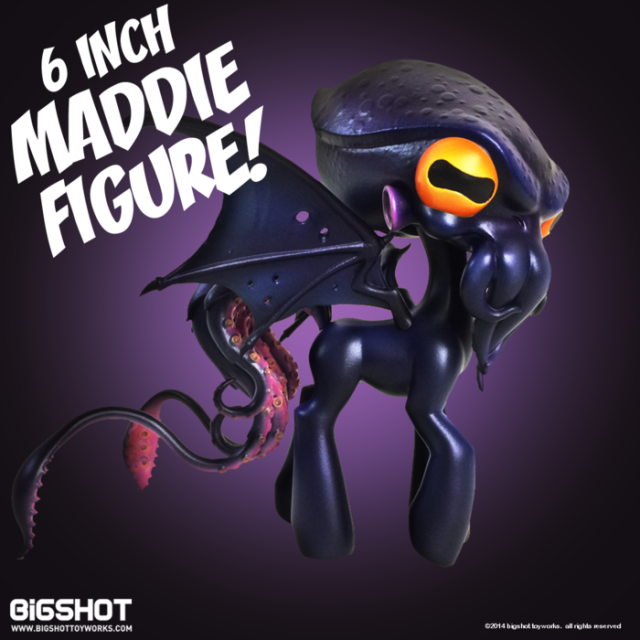Crowdfunding vs. seed funding: All money is not created equal | VentureBeat
Crowdfunding vs. seed funding: All money is not created equal
Crowdfunding has stormed the startup scene. Many entrepreneurs are turning to platforms like Kickstarter and Indiegogo to raise funds rather than seeking traditional seed capital. Success stories like gaming console Ouya and smartwatch Pebble have sent waves of excitement through a startup community that relies heavily on venture capital to keep its blood (and dollars) flowing.
Most entrepreneurs have faced rejection from investors at one point or another, and crowdfunding provides an alternative to going door-to-door to major VC firms looking for someone who believes in you and your idea. Along with the rise of crowdfunding comes criticism of the VC fundraising model and questions about the future of venture capital.
Is crowdfunding the new seed funding? And how does crowdfunding change the venture capital landscape?
?Friends-and-family funding on steroids?
Research firm Massolution recently published a report on the state of the crowdfunding industry. The report found that crowdfunding generated 1 million successful campaigns and $2.7 billion across the globe in 2012, which is an 81 percent increase from 2011. People from across the startup spectrum with a range of motivations are using these platforms to circumvent the usual seed-funding process and raise money directly from consumers.
?Companies in their early stages are faced with tougher entry barriers to the private equity markets than anyone else and thus are more likely to be attracted by the prospect of raising capital in a new and innovative way,? said Massolution research director Kevin Berg Kartaszewicz-Grell.
?Internal studies have shown that the success of a crowdfunding campaign is predominantly driven by the support of friends and family ? both financial support and support for ?spreading the word? about the campaign. Any company that is capable of leveraging social capital will be able to benefit from this form of financing. Crowdfunding is friends-and-family funding on steroids.??
Crowdfunding for a creative project is an entirely different proposition than trying to get a company off the ground. The term itself has come to encompass projects of all persuasions, including bands trying to finance upcoming albums, teams of experienced hardware engineers building a next-generation storage device, and civic projects that need an extra boost. It has become a complicated and nuanced system that works better for some types of companies than others.
This funding route, from project approval to tentative backers to a zero-sum end result, is not available or appropriate for all early-stage startups, but it?s well-suited to products that are capable of rallying support directly from users. Alon Goren is the CEO of InvestedIn, a company that powers crowdfunding platforms for other organizations. Goren said he was an early-comer to the crowdfunding space and has seen it evolve from a way to fund niche passion projects to a full-blown channel for seed-funding.
?A culture is developing around crowdfunding that is all about collaboration, community, and coming together to make thing happen,? he said.
?Ten years ago, startups wanted to seem as corporate and established as possible. But now people want the personal connection and the story and are excited about the do-it-yourself ethic and maker movement. At the end of the day, the money is the least important part, it?s about building community.?
The hardware revolution
Hardware was formerly an outcast segment of startup society, but the popularity of crowdfunding has helped usher in a hardware revolution. Hardware startups are especially suited to crowdfunding for a few reasons.
People are more likely to put money into projects where they get something tangible in return. The average (non-VC) person is more likely to fund a cool gadget that they want to own than enterprise software or social media marketing tools. Thus it is easier for a hardware startup to attract attention and dollars from mainstream consumers.
And hardware startups generally have higher overhead costs than software startups, which can run on Wi-Fi and Red Bull. Raising money on Kickstarter validates the market by proving there are people out there willing to buy the product before wasting time, money, and resources producing something no one wants. It also generates preorders and enough capital to take a prototype to market. At that point, traditional investors may begin to show interest.
Jimmy Buchheim is the CEO of SticknFind, a company that makes Bluetooth-powered mini-location stickers so you never lose your stuff. He previously worked for a studio that designed award-winning products for companies like Motorola, Audiobox, Sirius XM Radio, and Microsoft.
?We came up with products and visions behind the scenes and didn?t get any glory at all,? he said in an interview.
?When crowdfunding began to become popular, we saw our chance to get out of the closet and start making things for ourselves. Going the venture capital route is not as easy as it sounds, even if you have a great idea. We are a group of engineers in Florida. We have no contacts or network, and we aren?t marketing guys. We just want to make stuff. Crowdfunding allowed us to move forward as a company.?
StickNFind raised $931,000 on Indiegogo (the goal was $70,000), and Buchheim said he wants to crowdfund all of his company?s future products. As someone with extensive experience developing, manufacturing, and distributing hardware products, Buchheim said he?s confident the team can meet demand. The capability and expertise to execute on an idea is key here, since crowdfunding platforms are meant to jumpstart products rather than businesses.
But crowdfunding sites are not platforms for sales; and once a campaign closes, entrepreneurs are independently responsible for follow-through. Many struggle to carry out their promises.
Jim Clark is a designer and entrepreneur who launched a Kickstarter campaign for a line of GoPro cases and accessories. The campaign was successful, but the challenges that followed extended far beyond money. Underestimating the time and resources it takes to bring a product to market is one of the reasons why 75 percent of Kickstarter projects are shipped late. After his experience, Clark ?broke up? with Kickstarter.
?In order to manufacture and distribute your product, you end up beholden to suppliers, manufacturers, and everyone else along your supply chain, as well as investors,? Clark said.
?With Kickstarter, your funders aren?t given any information about how hard it really is to pull off the successful delivery of your product. They?re continually reminding you of what they want and need, and you?re scrambling to assuage their fears. Kickstarter doesn?t provide you with any resources beyond your initial funding. If you get into trouble later, you?re on your own.?
Enter the VCs.
Venture capital & ?smart money?
This is where venture capital can come in. VCs are about more than just money. Yes, the money helps, but so does a support network of mentors, industry experts, and people who have a financial stake in helping portfolio companies grow. Entrepreneurs are warned not to take just any money, but to hold out for ?smart money.? In exchange for equity, good venture capitalists are committed to giving entrepreneurs the tools they need to succeed.
?Crowdfunding can be great for for first-time entrepreneurs who may not be able to raise VC money, for products that may not be large market ?venture businesses,? ideas that are too raw for venture investors, or entrepreneurs who don?t want a more active partner,? said Byron Deeter, a partner at Bessemer Venture Partners.
?However, money is the commodity ? any good team or business can raise money. The best teams also often want a value-added partner who can help the business in other ways: strategy, hiring, partnering, financings, exits, et cetera; and this is where the best venture capital firms repeatedly differentiate themselves.?
VCs generally don?t make an investment until a company has validated the market, gained traction, and shown they can execute on their vision. The doors to VC firms are often closed to entrepreneurs just starting out unless they are extremely well connected or have already made a name for themselves. VCs (as they like to remind you) are very busy and receive a lot of inbound requests. Opening up to anyone with an idea and a bit of coding experience is not in their best interest.
Over the past few years, venture capital firms like Sequoia and Andreessen Horowitz have waged secret scouting programs to get in on promising early-stage deals, and institutional names frequently pop up in seed-round funding announcements. The scouting is still mainly focused in Silicon Valley and still applies to people already in that startup scene.
Furthermore, reports show venture capital is going through a contraction phrase right now, so many entrepreneurs are turning to crowdfunding ? at least until they can get enough momentum to catch the eye of a VC.
Pebble is the largest Kickstarter project in history. The smartwatch maker raised a whopping $10.26 million in five weeks. Pebble is a customizable watch that can access fitness, sports, and music apps and display alerts and notifications from your phone. Founder Eric Migicovsky started working on this project five years ago. He participated in Y Combinator in 2011 and raised a small angel round of funding. When iOS 5 came out, he wanted to build a version for the iPhone (before it only worked with Android or Blackberry), and he set out to raise venture capital in the beginning of 2012. After repeatedly facing rejection, he turned to Kickstarter to bring Pebble to market.
?At the time we hadn?t exhibited market draw, and there was a lot of uncertainty about hardware,? Migicovsky said. ?But we hit just the right point of the curve for wearable devices and Kickstarter campaigns and it really took off. We touched a nerve with people all over the world but realized after six to eight months of manufacturing that to build an ecosystem of devices and apps around Pebble, we needed more financing.?
In May 2013, Pebble announced raising $15 million led by Charles River Ventures. The $10 million from Kickstarter is not growth money; it?s dedicated to fulfilling the 69,000 orders (which have yet to ship). Pebble will use the financing from CRV to expand its engineering team, grow to meet demand, and foster its open development platform. Crowdfunding was a start, but to build a fast-growing startup, you need other forms of capital.
The JOBS Act
The JOBS Act passed in 2011 to open up investment opportunities for startups by allowing for the public offering and solicitation of shares and for nonaccredited investors to make equity and/or debt-investments. The SEC has yet to publish regulations, so the details are still up in the air. However, in the past year, a handful of companies have found innovative ways to put equity investing online and open opportunities up to a crowd.
FundersClub launched out of Y Combinator in July. It is a platform where accredited investors have access to an inventory of vetted, early-stage startups. Each featured company has a fundraising goal (like on Kickstarter), and when one achieves that goal, FundersClub bundles them together and represents all the investors as one entity, which shows up as FundersClub on the cap table.
?We see ourselves as online venture capital, rather than crowdfunding,? said founder and CEO Alex Mittal. ?Normal seed rounds for startups are typically funded by a group of people. You rarely see a single source of capital, and we do the online version of that. This expands access and evens the VC playing field, so accredited investors from anywhere can have access to quality startups. Its a democratization of traditional venture capital.?
One of the issues with equity crowdfunding is that people are not motivated to carry out a lengthy due diligence process for small investments. FundersClub addresses this issue by doing due diligence themselves and primarily featuring fellow Y Combinator startups that are already vetted by a trusted community. Since it requires less work on their part, investors can diversify their portfolios without much extra effort.
This approach is also appealing to startups that are raising money but want to cut down on the time, legwork, and connections necessary to close a round. Tinderbox was FundersClub?s first non-Silicon Valley investment. TinderBox is a startup based in Indiana that provides enterprise software solutions for managing, tracking, and automating business proposals, contracts, and collateral. One of Tinderbox?s current investors referred the company to FundersClub to finish out its round, without constantly traveling back-and-forth.
?Like most high-growth companies, our most valuable commodity is time,? said CEO Dustin Sapp. ?Raising financing requires a significant amount of time meeting with individual investors and managing multiple diligence timelines, all while attempting to maintain your young business?s momentum. Because the number of potential investors you?re able to meet with is limited, your chances of finding multiple investors with the ?right fit? are significantly reduced. FundersClub not only allowed us to save a considerable amount of time, but also increased our reach to make sure we could find investors that understand our space and can bring more than a check to the table.?
AngelList is a well-known online network of startups and investors. Startups post information about their companies, and 302,596 members of the investor community have profiles with their background, investments, followers, and such. AngelList is a place where they can connect and potentially strike a deal. In November, Angellist partnered with broker-dealer SecondMarket so that accredited investors could actually make investments in startups they found promising. Any startup that has a strong lead investor can open their round up to the crowd of accredited investors. In the last month alone, SecondMarket fostered 8,966 intros and $12,032,507 in funds raised.
?Crowdfunding is a partial solution,? said founder Naval Ravikant. ?The goal is make it easier for startups to raise capital. But someone always has to do due diligence, and it is important to have strong advocates on board, which traditionally are VCs. Generally companies that raise through these methods also raise through other methods. Investing in startups is risky and dangerous, it is not for the faint of heart, but in an era where the treasury pays nothing and interest rates are low, people are seeking out risk assets and like the idea of investing online with no hassle.?
A more equal ecosystem
Crowdfunding is not replacing angel investing or venture capital. Rather, it?s joining ranks with these methods as a viable way to raise money. Like traditional investments, it has advantages and disadvantages and the process is different for every startup. The biggest beneficiaries seem to be entrepreneurs in commonly overlooked verticals or from marginalized demographic groups who have an army of supporters behind them, but before crowdfunding had no platform to rally them. Ultimately, the rise of crowdfunding signals a shift in the startup ecosystem. We are moving towards an environment that is more open and accessible to entrepreneurs and investors alike. The real impact is that no matter who you are or where you are from, you have a greater opportunity to grow a business.








